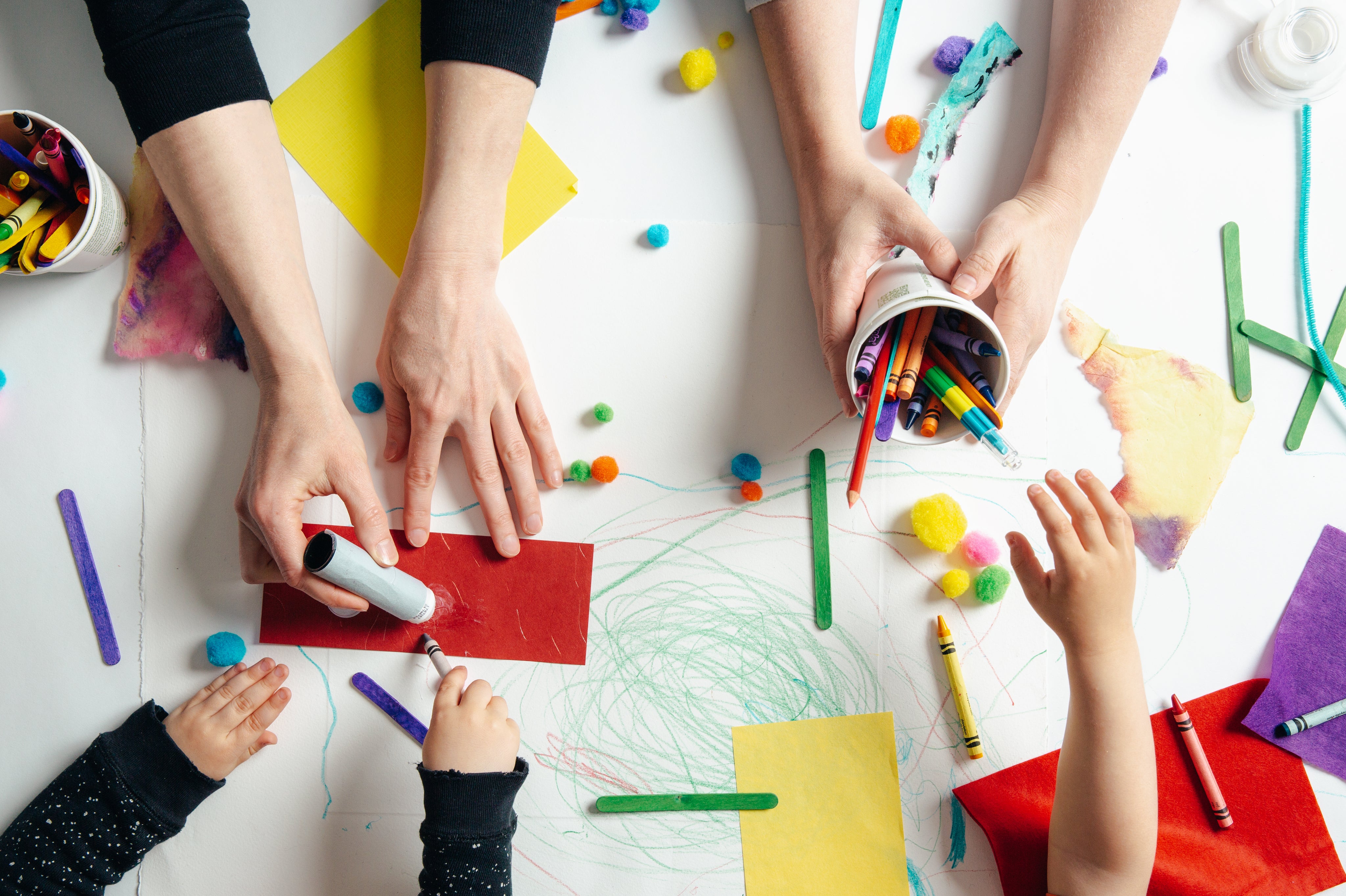Key takeaways
- There are lots of different reasons children might be distracted in the classroom or when studying at home
- There are many ways teachers can help children to be less distracted in class
- Teachers may consider removing visual and auditory distractions from the classroom
- They could also incorporate movement breaks into the day
- As a teacher, allow students to use aids like privacy blockers and earplugs
- Teachers should work closely with parents and with the child to determine what works best for their specific needs
There are lots of different reasons that kids get distracted, from smartphones to background noise. But one question remains: how to limit distractions at school?
Here are some ways to deal with distractions that you can implement in your classroom to create a safe space where children can more easily focus.

Accommodate different learning styles
Not everyone learns in the same way. Some people learn by doing, others need visual aids, while others can simply listen and take in instructions.
Often, if a child is in a lesson which doesn’t match their particular learning style, they’re more likely to get distracted. Switch between different learning styles throughout the day, such as direct instruction, independent tasks and group work, and use different teaching aids to help support learning.
Visual learners will benefit from diagrams, charts and videos, for example, while kinesthetic learners (who learn through physical activity) may need hands-on activities and experiments. Incorporating different types of learning will help to ensure that the whole class stays engaged.
Reduce distractions
From big, bright posters on the wall to fluorescent lights that buzz all day long, there are a lot of visual and auditory distractions in the classroom. Think about what you have in your classroom and how children might be affected.
If the lights are particularly bright and noisy, could you turn them off? And instead of having lots of posters on the wall, could you leave them blank? If you do want to decorate the classroom, consider adding posters and signs on the back walls only, and leaving the space around the board free of clutter.
Incorporate movement breaks into the day
Movement breaks can be beneficial to kids who find it difficult to focus. Structured movement between lessons or tasks gets the whole class out of their seats and avoids singling out any single pupil.
You could get all pupils to walk around the classroom on their tiptoes during a break between lessons, for example, or do a few push ups against the wall.
Incorporate brain breaks
Just like physical activity, brain breaks can be a great way to refocus children between tasks. These are quick, structured tasks that take just a few minutes but give your students a few moments of rest from whatever task they were working on. It helps to re-engage them and get them ready for the next lesson or task.
The options for brain breaks are endless, whether you want something energizing or calming for your students. You could try:
- Deep breathing exercises
- Mindfulness exercises
- Getting your students to line up in age order (or height order, or alphabetical order)
- Send a Mexican wave around the classroom
- Do some tongue twisters
- Do some yoga poses
- Have some kids volunteer to tell a joke
- Take five minutes to doodle or color in
- Ask some “would you rather?” questions
Keep lessons short
Kids have short attention spans in general – and some children are distracted more easily than others. In general, attention spans are as follows:
- 4 years old: 8-12 minutes
- 5-6 years old: 12-18 minutes
- 7-8 years old: 16-24 minutes
- 9-10 years old: 20-30 minutes
- 11-12 years old: 25-35 minutes
- 13-15 years old: 30-40 minutes
- 16+ years old: 32-50+ minutes
So if you have a class full of 6 year olds, and you’re delivering 30 minute lessons, it’s likely you’re not just losing the most easily distracted students, but the whole class.
It’s best, then, to split lessons down into smaller chunks based on age. You don’t need to move onto a new topic every 15 minutes, but you could move from explaining a task to pair work, for example, or from quiet reading time to discussing the book in a group.
If you have a longer task that’s beyond the average attention task of your class, you could keep the students’ attention by asking them to complete different, smaller tasks that require them to do different types of thinking or learning.
Allow all kids to use aids
Classrooms can be full of things that trigger sensory overload, leaving some kids feeling distracted and overwhelmed.
One way to combat this is to allow all children the option of using aids to help combat their sensory triggers. By opening up this option to all children, again you avoid singling out any particular child. Some options include:
- Privacy dividers: Privacy screens may help some children to stay focused on their own work, as it blocks out any visual distractions around them.
- Earplugs: Earplugs can help to lower the volume of distracting noises, allowing kids to focus on what the teacher is saying, or get on with their individual work without becoming preoccupied with what’s going on around them.
Stress balls and fidget toys: Having a squishy ball or a fidget spinner that kids can use under their desk can help them to maintain their focus, while not distracting other children.
Implement rules around the use of personal devices
Since cellphones and other digital devices are one of the biggest causes of distraction for kids at school, consider whether you want to implement any restrictions around their usage in class. This is likely something that would need to be a school-wide policy, to ensure all students are treated the same, but it may be worthwhile considering.
Be mindful, however, that some students may use smartphones as learning aids or for health reasons, so any policy around the use of cellphones in class must be inclusive for all students.
Consider your seating plan
Where children sit in the classroom can have an impact on their ability to concentrate. If you know a child is easily distracted, then placing them at the back of the classroom where they can’t easily see the board or the teacher might lead them to become disengaged and fidgety. Instead, place them at the front of the room where they face the board and can maintain good eye contact with you as the teacher.
Similarly, if an easily distracted child is sitting beside or behind another student who fidgets a lot, they may be more inclined to copy their behavior. Instead consider sitting pupils with good attention to tasks and a settled approach to work beside more easily distracted students, as they may be more likely to copy the behavior of the settled student.
Check for understanding and offer support
Don’t just give out instructions and assume that everyone has understood. Check in on your students to make sure they know what they’re supposed to do, and whether they need any support, either in interpreting the instructions or with doing the task itself.
How to help easily distracted students
As a teacher, it’s likely that you’ll encounter many children who struggle to concentrate. It’s all about creating an inclusive environment where your students feel supported. From minimizing distractions in the classroom to offering individualized support, there are plenty of ways you can help children to focus and thrive in school.
Regular communication with both parents and students can help them to feel empowered when it comes to studying, so always talk to your students’ parents or carers to help them understand any ways they can help their child to become less distracted at home. When you work together, it can make the journey much easier for the students – which is always the most important thing.

Top Tips for Flying with Children: Essential Advice for Stress-Free Travel
Discover expert tips for flying with kids and ensure stress-free travel. Get essential advice for a smooth journey here.

Addressing noise disturbances: tips & laws
Learn how to address noise disturbances with practical tips and understand the laws that protect your peace. Essentia...

What To Look For In Noise Reduction Earplugs
In this blog post, we’re going to take a closer look at noise cancellation. What exactly is it? How can it help your ...















